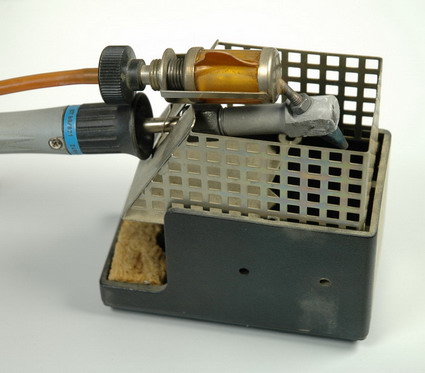How to Fix Your Motherboard for $15
Let's Get Started!
Appropriate Tools
This is a processor-controlled soldering/de-soldering station.
Before we start, note that you must conduct all further steps at your own risk. We recommend this task only for users who have had experience using soldering tools. Tom's Hardware assumes no liability for any damage to the motherboard, the capacitors or you.
Professional de-soldering tools are essential for soldering work. Neither manual soldering irons nor de-soldering pumps are suitable, since heating and removing the soldering tin has to take place in a single process. Otherwise, the soldering tin will solidify immediately. The motherboard itself absorbs a lot of heat, which makes de-soldering difficult.
Your de-soldering tools' soldering tip should be 0.8-1.0 mm in diameter, so the soldering tin can easily be sucked away from the soldered spot. In our lab, we used a rather old processor-controlled soldering/de-soldering station called the PLE-9001. Another manufacturer of professional level soldering/de-soldering tools is ERSA.
De-soldering iron with electronic suction pump
In addition, we need solder and electronic diagonal cutting pliers. The latter is smaller than a normal side cutter and is therefore handier for delicate work. A small bench vise with plastic chucks is also helpful to hold the motherboard in a vertical position while soldering. Make sure you attach the vise at an appropriate location and do not pull it too tight.
Get Tom's Hardware's best news and in-depth reviews, straight to your inbox.
Current page: Let's Get Started!
Prev Page How To Buy Substitute Low-ESR Capacitors Next Page De-Soldering Capacitors

